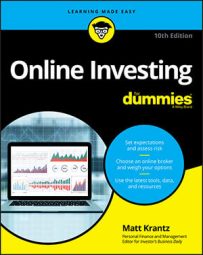To sell a stock short, you follow four steps:
-
Borrow the stock you want to bet against.
Contact your broker to find shares of the stock you think will go down and request to borrow the shares. The broker then locates another investor who owns the shares and borrows them with a promise to return the shares at a prearranged later date. You get the shares. Don't think you're getting to borrow the shares for nothing, though. You'll have to pay fees or interest to the broker for the privilege.
-
You immediately sell the shares you have borrowed.
You pocket the cash from the sale.
-
You wait for the stock to fall and then buy the shares back at the new, lower price.
-
You return the shares to the brokerage you borrowed them from and pocket the difference.
When you short a stock, you need to be aware of some extra costs. Most brokerages, for instance, charge fees or interest to borrow the stock. Also, if the company pays a dividend between the time you borrowed the stock and when you returned it, you must pay the dividend out of your pocket. You're responsible for the dividend payment, even if you already sold the stock and didn't receive the dividend.

